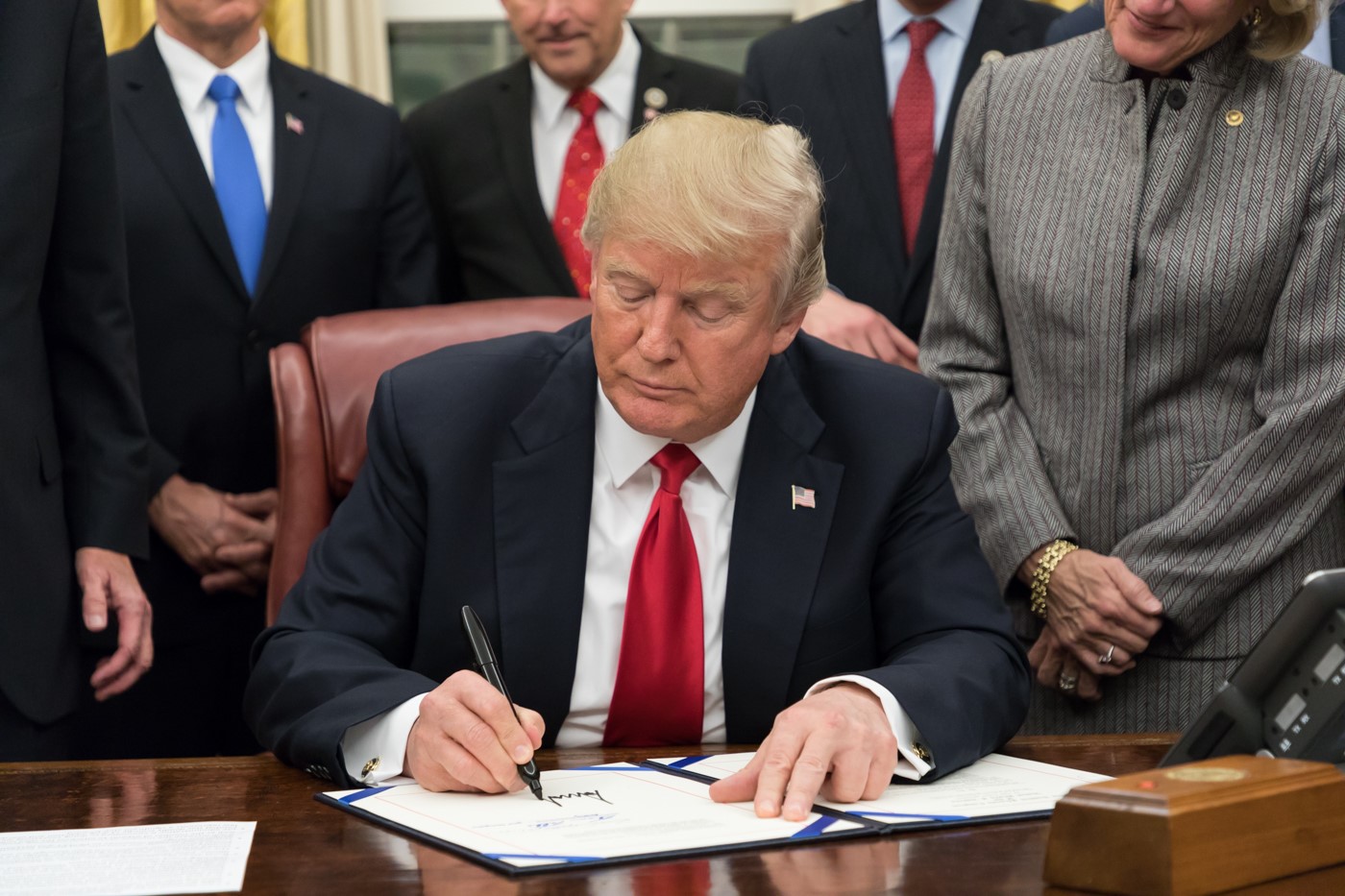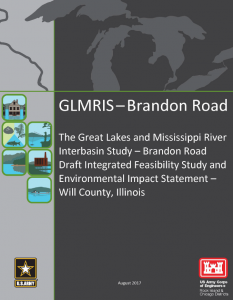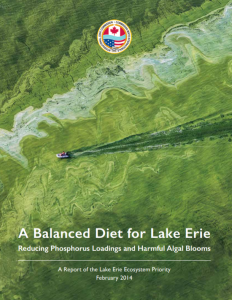
No funding cut for U.S. EPA

President Trump at a meeting in the Oval Office, courtesy of whitehouse.gov
After a year of stops and starts, Congress late last week approved the 2018 federal budget which includes the full $300 million for Great Lakes restoration.
President Trump signed the legislation after a last minute threat to veto it.
Last March, Trump set off a firestorm of protest in the Great Lakes region with his budget proposal that would have eliminated all federal funding for the lakes.
Members of the Great Lakes congressional delegation, with support from the various advocacy groups in the region pushed hard for the funding. U.S. EPA Administrator Scott Pruitt eventually recognized the importance of Great Lakes restoration and praised it publically.
Pruitt had earlier defended the proposed cuts to Congress.
Important for Michigan
Michigan Sen. Debbie Stabenow said in a statement, “This budget bill includes important priorities for Michigan.” She says the Great Lakes restoration program has brought $600 million to the state since 2010. One in five jobs in Michigan is tied to Great Lakes water, according to Stabenow.

Michigan Senator Debbie Stabenow, courtesy of DPTV
To Stabenow’s point, $30 million in restoration money for the Detroit River has allowed projects that had languished for years for lack of money to move forward.
The federal funding for habitat restoration “goes to local construction companies, barge operators, consulting firms and quarry operators,” Michigan Sea Grant’s Mary Bohling told Great Lakes Now.
Bohling said because of river restoration work “we’ve seen an increase in reproduction of 17 fish species including sportfish such as lake sturgeon, walleye and others which attract anglers.”
Sheboygan’s revival
Sheboygan, Wisconsin’s river was on a 1987 list of the Great Lakes region’s sites contaminated with toxic pollution that remained from the industrial era.
In an exchange with Great Lakes Now, Sheboygan Mayor Mike Vandersteen acknowledged that the city’s “freewheeling industrial past” had lead to contamination of the river.
Vandersteen said Sheboygan had done all the work it could to bring people back to the river including the addition of a marina and resort hotel. ”The only black eye on the area” was the remaining toxic site and it was one of the first sites to be remediated after restoration money began to flow, according to Vandersteen.
Over $80 million including a significant portion from the Great Lakes restoration program cleaned up the site.
Vandersteen said there’s now increased demand for housing on the river which fits well with Sheboygan’s reputation as a mecca for freshwater surfing.
In other budget action:
The budget includes a provision that requires the Army Corps of Engineers to pick up the pace on Asian carp by meeting its original deadline of February 2019 to produce a final report on the Brandon Road Lock study. The study will determine the cost and feasibility of the lock as a choke point to stop the carp advance on the Great Lakes.
The study’s release was delayed by the Trump administration based on a request from the state of Illinois.
Since 2009 Congress has passed legislation to prompt the Army Corps on Asian carp studies and plans but has not produced the required legislation or funding that would cause the Corps to take action.
Congressional budget negotiators also knocked a rider out of the budget bill that would have made it easier for the U.S. EPA to roll back the Clean Water Rule put forth by the Obama administration. The rule defines which waters come under the jurisdiction of the Clean Water Act.
EPA will still work to modify or eliminate the rule but it must comply with all existing administrative procedures such as holding public comment sessions.
In another setback to Trump’s goal to drastically reduce the size of the EPA, Congress rejected his proposal to cut the agency’s budget by 31 percent.
Funding for the EPA will remain at the 2017 level of $8.1 billion.
Congress also allocated $763 million for the EPA in another area of the budget for water infrastructure and Superfund sites, according to a report in The Hill. Michigan’s Kalamazoo River is on a priority list of Superfund sites but it has been unclear if that includes additional funding.
Lake Erie “impaired”
In another move related to the future of Great Lakes funding, Ohio succumbed to increasing pressure to declare the waters of western Lake Erie “impaired,” an official designation that could lead to stricter controls on algae-causing nutrients that runoff from farms.
Western Lake Erie has been plagued by algae blooms including one that caused the Toledo to be without drinking water for three days in 2014.

Governor of Ohio John Kasich speaks at a town hall style meeting,
The administration of Gov. John Kasich has been reluctant to use the impaired designation out of fear of alienating farmers who are opposed to regulations and, that it would negatively impact tourism on Lake Erie.
Kasich is in his last months in office and will not have to face voters on the issue..
The Ohio Farm Bureau on its website said while it doesn’t oppose the designation, “we remain unconvinced that the impairment designation was necessary, we will make sure that farmers’ voices are heard throughout the process.”
Last September as an algae bloom hit Maumee State Park, Toledo Blade editors called out the Kasich administration, Ohio’s two U.S. senators and the U.S. EPA for failing to act to protect drinking water.
“How bad does it need to get?” the editors wrote. How dire must the wake-up calls be? Are we waiting for pictures of poisoned children, as in Flint?”
The U.S. and Canadian International Joint Commission (IJC) first called for Lake Erie to be declared impaired in 2014 after completing a study on Lake Erie’s algae. It renewed its call for the impaired designation in 2017.
The commission advises the two countries on trans-border water issues.
Former IJC policy adviser Dave Dempsey worked on the 2014 report and he congratulated Ohio for “finally recognizing that the status quo is not working.”
Dempsey told Great Lakes Now that it “creates the possibility of a new phase in restoring Lake Erie but it should have happened years ago.”
Dempsey is now a policy adviser on Great Lakes issues for the Traverse City nonprofit FLOW.
With the ink barely dry on the 2018 budget, wrangling for the Great Lakes in 2019 has already begun.
President Trump’s budget proposal cuts 90 percent of the funding for restoration for next year. Great Lakes region legislators have written to congressional appropriators requesting full funding of $300 million for 2019.
The 2018 budget expires at the end of September.






